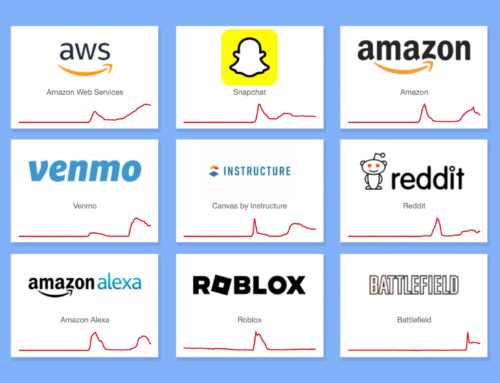Bringing Balance to Electricity Markets
October 21, 2025
Research
6 min.
As companies scale up renewable energy to support the achievement of countries’ net zero emissions targets, battery storage is emerging as a vital tool to integrate intermittent energy sources into power grids. Yet despite its promise, sustainability challenges and diverse policy frameworks mean that viable business models for Battery Energy Storage Systems (BESS) remain highly context dependent.
Eric Benoist, Tech & Data Research Specialist, and Ivan Pavlovic, Energy Transition & Hybrids Specialist, discuss the varied revenue and financing models available to battery storage developers.

Eric Benoist

Ivan Pavlovic
The challenge of intermittent energy
Governments around the world are accelerating decarbonisation to reach net zero greenhouse gas emissions by 2050 – a timeline designed to avoid the most severe impacts of climate change, according to the Intergovernmental Panel on Climate Change (IPCC). Achieving this goal requires sustained growth of renewable energy sources (RES) like wind turbines and solar photovoltaics (PV).
Under the International Energy Agency’s (IEA) Net Zero scenario, solar PV and wind generation are expected to rise from 12% of global electricity in 2022 to 71% in 2050. However, these energy sources are intermittent – generating abundant electricity when sun and wind are available, but none when they are not. This intermittency creates volatile electricity prices, driving them down during periods of high generation and spiking them when output falls.
To stabilise wholesale energy markets, energy storage systems are essential. BESS – integrated systems using rechargeable battery modules to store and release electricity – are emerging as the most promising solution.
Why BESS?
BESS is emerging as strong asset class, with Bloomberg NEF forecasting an 18-fold increase in global installations over the next decade. Natixis CIB recognises the strategic importance of this growth, having financed over six gigawatts (GW) of batteries globally and acted as financial advisor on more than two GW of BESS projects in the past five years, while its global commodity markets team is developing power hedging solutions for battery assets .
Traditional forms of energy storage – such as pumped hydro storage (PHS) and compressed air energy storage (CAES)– have long supported grid balancing. Yet BESS offers distinct advantages: it can be developed rapidly, co-located with renewable sites and scaled modularly. Its higher energy density and efficiency make it ideal for the flexible, decentralised grids of the future.
However, BESS sustainability and lifespan remain key hurdles. The average BESS can cycle about 5,000 times, with the most sophisticated reaching around 7,500 times. The resulting lifespan of the systems is around 15 years, and thus much shorter than for PHS or CAES (50-60 years). At the same time, initial capital costs are still high, and there is therefore a strong incentive to make batteries profitable over shorter cycles, and to design them for short-duration applications of 2 to 4 hours on average.. At present, their economic viability is limited to intraday trading and frequency regulation. Their heavy reliance on lithium-ion chemistry also raises environmental concerns.
Sustainability hurdles and material innovation
The sustainability challenge for BESS lies in the material intensity of lithium extraction. In South America, brine extraction consumes roughly two million litres of water per ton of lithium, often in arid regions where groundwater is scarce. Chemical leakage during processing also poses risks to local ecosystems.
Efforts to improve lithium recycling are underway – the IEA expects global recycling capacity to increase fivefold d by 2030 – yet current hydrometallurgical methods can generate wastewater and remain costly.
Sodium-ion batteries are showing early promise, offering abundant raw materials, low cost, and greater thermal stability. However, their immaturity and limited energy density mean further R&D is needed before large-scale deployment.
The many models of BESS
Across global markets, BESS deployment strategies and revenue models vary widely, shaped by regulation, market structure and policy support.
California and Texas lead US BESS deployment, reaching 15GW and 10GW of installed capacity respectively in 2025. Both benefit from federal Investment Tax Credits but differ sharply in their revenue structures.
California combines long-term contracted revenues through its Resource Adequacy (RA) programme – where BESS operators secure capacity contracts with the system operator – with shorter-term merchant revenues from energy trading and ancillary services. By contrast, Texas operates entirely on merchant revenues, relying on ancillary services and market arbitrage. These differences highlight how policy frameworks determine the balance between revenue stability and exposure to market volatility.
Across the Atlantic, the UK stands out as a frontrunner in BESS development with 4.5GW of installed capacity at the start of 2025. A proactive policy framework supports revenue stacking to manage market saturation. The inclusion of BESS in capacity market auctions enables projects to earn CPI-indexed long-term revenues, while reforms to balancing mechanisms expand trading opportunities.
Meanwhile, an emerging revenue trend is appearing in the form of private tolling agreements between BESS owners and energy suppliers. These contracts allocate part of a BESS’ capacity at a fixed price – typically for two to ten years – while leaving the remainder exposed to merchant markets, improving revenue duration and stability.
Inside the EU, Germany and Italy illustrate how shared energy targets translate into different BESS market dynamics.
In Germany, deep wholesale markets and high volatility favour merchant revenues from intraday trading and ancillary services. Tolling contracts are rising, with six agreements already active by September 2025 – but no state-backed long-term revenue schemes exist as of today.
On the other hand, Italy has introduced multiple auction-based mechanism such as MACSE scheme and capacity market tenders. These allow developers to secure 15-year fixed revenues for a portion of their capacity, offering predictability and encouraging large-scale investment.
Over in Asia, China remains the global leader, with 30GW of installed BESS capacity in 2025. Its vertically integrated supply chain, from mining to manufacturing, gives it a major cost advantage. Here too revenue models remain context-sensitive, with regional asymmetries dependent on local electricity market designs. In advanced electricity markets BESS can trade across day-ahead, real-time and physical markets, though elsewhere, fixed pricing limits flexibility.
Through policy-led market reform and heavy R&D investment – surpassing the EU in both nominal value and share of GDP – China is strengthening BESS integration and maintaining its dominance in global supply chains.
No universal business model
Given the diversity of market conditions, no single business model fits all BESS projects. Instead, developers “stack” multiple revenue sources, balancing contracted revenues from long-term agreements with merchant revenues from trading.
Contracted models thrive in markets with policy certainty and strong public-private partnerships, such as Italy’s MACSE auctions or California’s Resource Adequacy system. In contrast, merchant-driven models dominate in markets like Texas and Germany, where price spreads are wider but less predictable.
As markets mature, price cannibalisation erodes returns from frequency services and eventually arbitrage opportunities. To mitigate this, developers are turning to tolling agreements – such as those seen in the UK – which secure partial long-term revenues while retaining exposure to merchant upside. These hybrid structures are proving effective in stabilising revenues and maintaining investor confidence as BESS markets evolve.
Financing the new asset class
Financing is also evolving in BESS. Unlike renewable energy projects, BESS assets often lack long-term guaranteed cash flows, making non-recourse debt less accessible and pushing developers to tailor financing to their revenue structures.
In markets such as Germany and Texas, where projects rely primarily on merchant revenues, developers tend to favour equity financing to capture short-term value despite higher risk exposure. Meanwhile, in markets like Italy and California, where long-term contracted revenues offer predictable returns, non-recourse debt financing becomes viable. Between these extremes lies a growing number of hybrid projects combining merchant and contracted revenues. These projects can attract a blend of equity and debt, allowing developers to manage risk more flexibly.
Time-to-market also plays a critical role. In competitive or saturating markets, developers often prioritise rapid deployment to secure early revenue, even if that requires high equity participation. This dynamic highlights the importance of aligning financing strategy with both regulatory maturity and competitive intensity.
An evolving asset class
BESS systems will remain central to achieving global net zero targets, enabling renewables to provide the grid stability and reliability once delivered by fossil fueled power plant. Yet its long-term success will depend on the interplay between technology innovation, policy evolution and financial adaptability. Reducing dependence on lithium and extending battery lifespans will be essential to making the asset class more sustainable, while regulatory and market mechanisms must continue to evolve to ensure balanced, long-term revenue streams.
New business and financing models – such as tolling agreements and hybrid capital structures – are already helping to stabilise returns and attract investment. As R&D and policy frameworks mature, they will further define how BESS scales globally and supports the energy transition.
Watch the Webinar Replay
Search
RECENT PRESS RELEASES
Related Post




